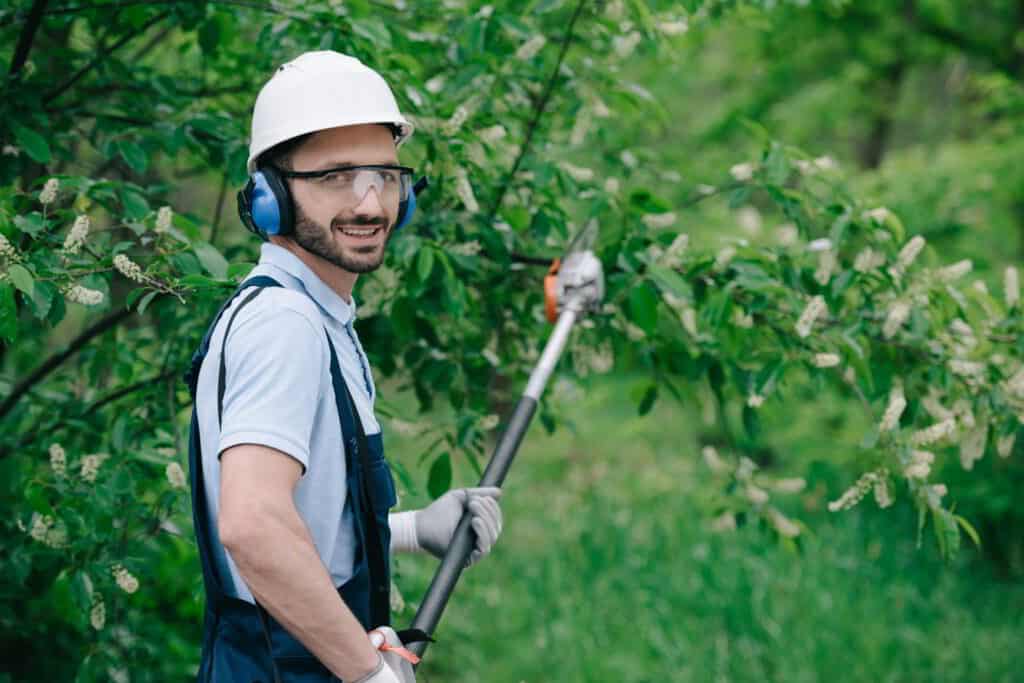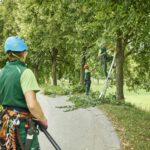Proper tree care is crucial throughout the year to ensure the health and longevity of your trees. Each season brings its own set of challenges and requirements that, when met, can significantly enhance a tree’s structural integrity and aesthetic value. This guide will explore how to maintain trees properly during each season, with advice from experienced arborists. Engaging a professional can make all the difference in the vibrancy and safety of your trees. According to the U.S. Forest Service, well-maintained trees can increase property values by up to 10%, while neglected or hazardous trees can reduce them significantly and pose safety risks during storms or drought conditions. Investing in seasonal care not only preserves tree health—it also safeguards the landscape and the investment beneath it.
Spring Tree Care Essentials
Spring is a critical time for tree care, as plants awaken from the dormancy of winter and begin a new cycle of growth. This is the perfect time for arborists to prune dead or weak limbs, ensuring that the tree’s energy is directed towards healthy growth. Fertilization is also key, as nutrients support the lush growth typical of the season.
- Pruning to remove dead or diseased branches encourages healthier tree growth.
- Fertilization provides essential nutrients for spring growth spurts.
- Pest and disease inspections are crucial to catch issues before they escalate.
Summer Maintenance Practices
During the hot summer months, trees need special care to cope with the heat and potential drought conditions. Ensuring adequate hydration through proper watering techniques is essential, especially for young trees or those in particularly dry areas. Arborists also recommend mulching to help retain soil moisture and regulate soil temperature.
- Regular watering during dry periods prevents stress and promotes growth.
- Mulching helps conserve moisture and protects roots from extreme heat.
- Monitoring for summer-specific pests and diseases can prevent major infestations.

Fall Preparation Techniques
As the days begin to shorten, trees prepare for the colder months ahead, and so should you. Fall is the ideal time to apply a slow-release fertilizer that helps trees withstand the winter. Additionally, another round of pruning may be necessary to remove any limbs weakened by the summer’s growth or damaged by early fall storms.
- Application of slow-release fertilizer prepares trees for winter.
- Pruning in fall helps prevent damage from winter snow and ice.
- Checking and adjusting tree stakes and supports can prevent wind damage.
Winter Tree Care Strategies
Winter care mainly involves monitoring trees for signs of stress or damage from snow and ice. Arborists might wrap the trunks of younger trees to protect them from the cold and prevent sunscald. This season is less about active maintenance and more about protection and assessment, preparing for the active growth to come with spring.
- Wrapping young tree trunks protects against frost and sunscald.
- Removing snow from limbs can prevent breakage.
- Winter is a good time for structural assessments by an arborist to plan for spring care.
Choosing the Right Arborist for Seasonal Care
Selecting the right arborist is crucial for effective seasonal tree care. Ensure the arborist is certified and experienced, particularly with the types of trees on your property. An expert with local knowledge can provide tailored advice that significantly boosts the health and resilience of your trees.
- Verify the arborist’s certifications and professional affiliations.
- Choose someone familiar with local climate and tree species.
- Look for arborists with positive reviews and a good track record.

Maintaining Healthy Trees Year-Round
By following seasonal care guidelines, you can ensure that your trees remain beautiful and robust throughout the year. Each season requires specific approaches that, when effectively executed, prevent disease, encourage growth, and extend the lifespan of your trees. Consulting with a certified arborist can provide you with customized care strategies that are crucial for the well-being of your arboreal investments.
Key Takeaways for Effective Tree Maintenance
- Each season requires specific tree care strategies.
- Professional arborists are invaluable for optimal tree health.
- Regular maintenance prevents long-term problems and costs.
Frequently Asked Questions
- What is the best time of year to prune trees?
- Late winter or early spring is typically the best time to prune most trees, as it prepares them for new growth.
- How often should I water my trees?
- It depends on the species and your local climate, but generally, deep watering once a week is sufficient for most trees during dry conditions.
- Should I fertilize my trees every spring?
- Yes, spring fertilization is beneficial for most trees, providing them with the nutrients needed for the growing season.
- How do I protect my trees from winter damage?
- Wrapping, proper pruning, and sometimes applying anti-desiccant sprays can help protect trees from winter weather conditions.
- Can mulching be bad for my trees?
- While mulching is generally beneficial, incorrect application—like piling it against the trunk—can cause moisture buildup and rot.
Precision Arborcare is your trusted arborist for expert tree services in Asheville, NC. Built on a passion for trees and a commitment to providing top-quality arborist care, our company excels in technical skills while prioritizing clear communication, customer satisfaction, and safety. Our team consists of certified arborists and tree care professionals dedicated to enhancing and preserving the natural beauty of your landscape. We pride ourselves on being approachable, friendly, and professional arborists, ensuring that our clients feel confident and informed throughout every step of their tree care journey. Precision Arborcare offers tailored arborist services to meet the specific needs of each client, from routine maintenance and emergency tree services to specialized care for your trees.






